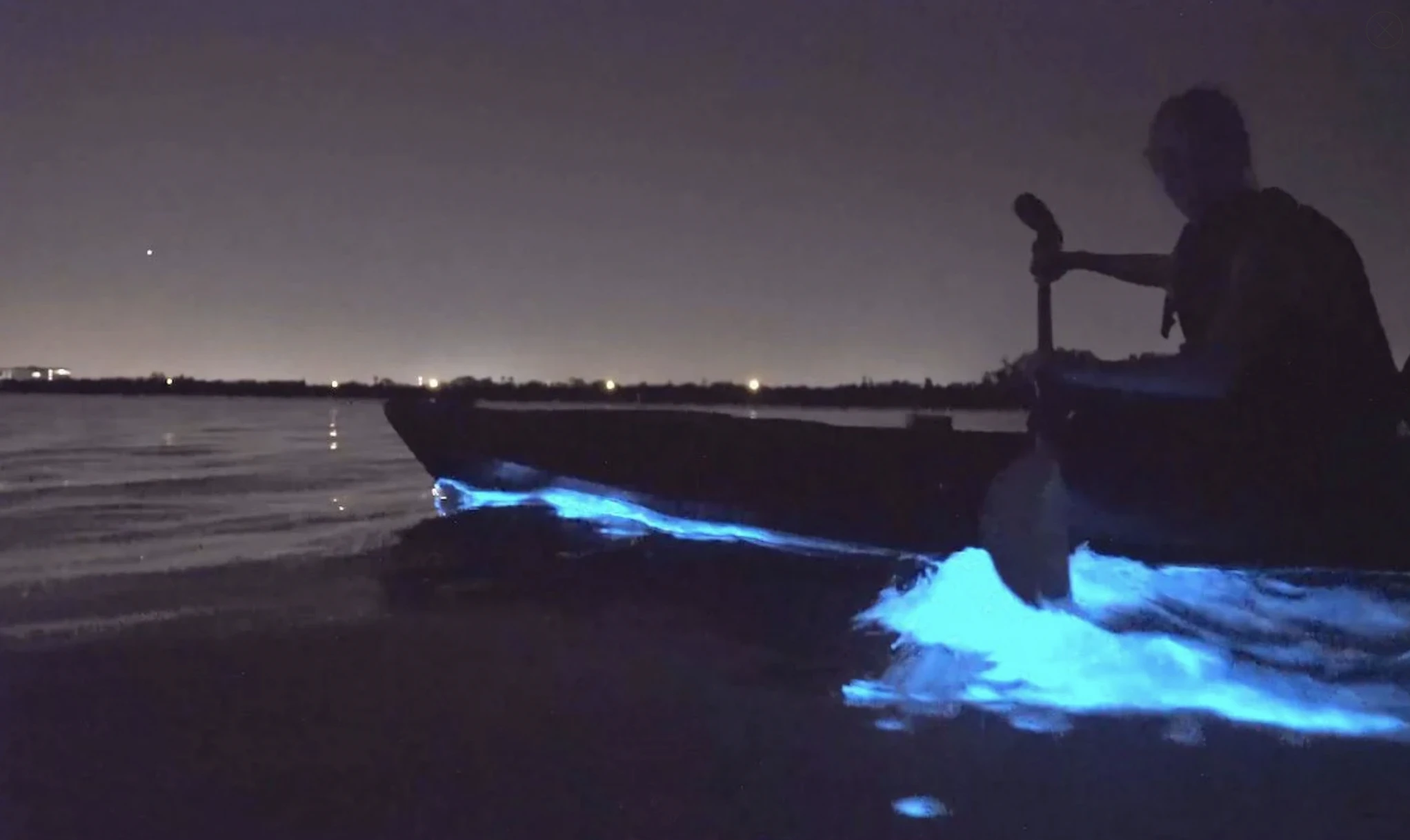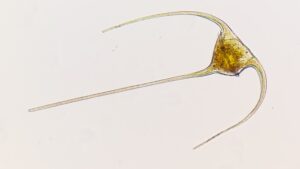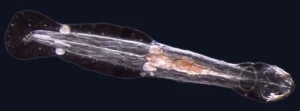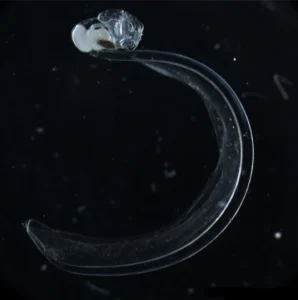
The two locations are due to high and low tides; Okura high tides and Waiake low tides
For large group bookings – more than 16 people – please contact us
Transport options from Auckland CBD (Skycity):
SNM ‘Bio-Bus’: 23 mins one-way / $50 return (select option at checkout); please meet 1-hr prior to start time and copy-paste this location into Google Maps: 36°50’53.9″S 174°45’43.8″E
Waiake Beach Bus: “3063 – Waiake Beach” (click here): 1 hr one-way / $11 return
UBER / Taxi (Okura & Waiake): 23 mins one-way / $100 return
At Okura we do not operate more than 8 m/s or 2.4 mm rain
At Waiake we do not operate more than 5 m/s or 2.4 mm rain
2 hour tour duration
Meet and greet. Meet your guide, check clothing, gather equipment, learn how to use your gear.
Tour starts. On the water, staying together, paddling around to find the bioluminescence, taking photos, paddle back to shore.
Clothing
Equipment
Includes:
Kayak
Paddle
Personal Flotation Device (PFD) with safety light
Excludes:
Transport
Dinoflagellate

This is surface bioluminescence we see the most. Dinoflagellates are diverse single-celled organisms with two flagellas (organelles for bacterial locomotion). ‘Dino-Bio’ serves a vital role in ecosystems, totaling around 2,293 species. Read more on this link about what a Dinoflagellate is
Salps

Probably the coolest one. Also called “sea grape,” is a barrel-shaped planktonic tunicate that moves by contracting its jelly-like body to pump sea water through. Salps feed on phytoplankton by straining and filtering sea water internally and as a result glows itself and showcases an efficient jet propulsion trail of bioluminescence! Read more on this link about what a Salp is
Chaetognatha

Arrow worms, or chaetognaths, are predatory marine worms found globally in plankton (133 species), with some attaching to algae and rocks (this is where we see the rocks and reefs bioluminescencing). Read more on this link about what a Chaetognath is
Larvacean

Larvaceans, also known as appendicularians, are small (2-8mm), transparent, tadpole-shaped tunicates found primarily in the photic zone (top ocean layer). Read more on this link about what a Larvacean is
Auckland Bioluminescence kayak tours offer a magical and awe-inspiring experience. Participants paddle through dark waters, witnessing the mesmerizing glow emitted by bioluminescent organisms. Guided by knowledgeable experts, these Auckland tours provide insight into the science behind bioluminescence while creating a unique and unforgettable adventure that showcases the beauty of nature’s illuminating phenomenon.
Experience Bioluminescent Night Cruising. Be one of the few to see this natural phenomenon known as ‘Sea Sparkle’ or ‘Marine Aurora’. This bioluminescence kayak tour in Auckland is an inspiring night paddle.
The best time to see bioluminescence is during warmer weather & water! Peak Auckland bioluminescence season is October-April which you can see bioluminescence seasonality here.. Tours are first-come-first-serve, so don’t wait!
The bioluminescence is influenced by the moon as it produces light, thereby complicating the observation process. During the full moon and when the moon has ‘risen’ above the horizon line into the skies, it is less ideal. BUT DON’T WORRY; all of SNM’s dates have either NO moon rises or full moons!
The water is often extremely clear giving great views of what is going past under your kayak. Auckland Bioluminescence Night Cruising allows you to experience the magical light show by the smallest of living sea creatures.
Escape with us to the most pure and otherworldly experience that natural New Zealand has to offer.
See the plankton glow in the dark from your first paddle stroke on the bioluminescent kayak tour. As the night grows dark, step into your very comfortable kayak and get ready for a personal encounter with this remarkable phenomenon.
Our professional guide will lead you to the best spots where the glowing algae accumulates. You will be enchanted by how every stroke of your paddles leaves behind a glowing swirl of bluish light, and fish light up their path like shooting stars in the water.
Bioluminescent organisms – from shimmering squid to flashing fish – produce light through the oxidation of luciferin catalyzed by luciferase. They glow for various reasons such as repelling predators, attracting mates, or luring prey. Plankton, particularly phytoplankton, also exhibit bioluminescence and play a vital role in marine ecosystems as they drift with ocean currents.
This incredible Auckland bioluminescence tour is peaceful and breathtaking, all at the same time. We don’t let the day end when the sun goes down.
At sunset, we gather for a welcome and our experienced guides give a briefing of the bioluminescence tour. They will equip everyone with suitable life jackets and lead the way to the launch area for the kayaks. They provide help entering the kayaks and giving instructions to those that do not have kayaking experience. Everyone gets to do the tour in their own kayak or a tandem kayak.
It’s like going on a cozy family tour. You stop along the way, where we explain more about the magical glowing water and the marine life in the bay.
We have grown up seeing millions of stars light up the night sky, beautiful, far away and untouchable. Paddling around in a kayak you are virtually floating in the bioluminescence, you trigger the marine light-show with your actions. From the kayak, you can reach into the water and let your hand light up and give the appearance of an Avatar-like character.
Enjoy being part of a small intimate group of kayakers, in an area with very little light pollution, because the darker it is, the better you see the glowing sparks in the water.
A lot of marine bioluminescence is called Plankton. Plankton by definition is a “sea drifter” meaning it is at the mercy of the waters and moves with it. We see phytoplankton, because it is autotrophic, meaning an autotroph creates organic compounds, typically using light or chemical reactions for energy.
Bioluminescence is the production and emission of light by living organisms. It occurs widely in marine (in)vertebrates and micro-organisms and you will likely see it in New Zealand on our Auckland bioluminescence kayak tour. We can break it down as bio- – lumen – -escence : ‘life-light-process’. When the organisms move in the water they create a beautiful glowing effect. This means that you can see fish underwater by the glow that they give off as they swim, your paddle will glow as you maneuver the waterways, and the natural flow of water will illuminate these organisms.
Bioluminesence is not phosphorescence ; a form of photoluminescence linked to fluorescence . These all absorb and reemit light, they do not produce light.
It is a biological response of microscopic algae/organism of luciferin and luciferase called a Dinoflagellate , which is why we coined the term ”dino bio”. The perfectly natural and harmless concentration of organisms produces light before your very eyes, often existing in millions per liter of water. Your tour will include a ton of information about these rare and exotic creatures with the most experienced guides in the area.
In the warm and dark lagoon waters lies a natural phenomenon of glowing blue waters alive with activity. The swirling of your hand, every paddle stroke, and the rolling wake off of your kayak all sparkle throughout the darkness. Many guests encounter the darting blue tracer trails of nearby fish swimming, describing them as an under-water laser light show.
Many guests compare the experience to Pandora of “Avatar.” Some even recall the bioluminescence scene in “Life of Pi” as the gentle plankton leave a trickling glow when you hold it in your hands and let it trickle down your arm.
An Ocean Full of Stars – Bioluminescent Algae: their ecosystems are very rare, often found in warm-water lagoons with narrow openings to the sea. These living lights in the ocean, you can experience right here with us.
Bioluminescence can be affected positively if you read here about Marine heatwaves, as well as being affected by climate change due to altered ecological conditions, increased nutrient availability, adaptation, shifts in ecosystem dynamics, and changes in symbiotic relationships. This helps SNM forecast our bioluminescence tours due to sea surface temperatures. The rise in ocean temperatures may favor the growth and distribution of bioluminescent organisms, leading to an overall increase in bioluminescence. However, while this phenomenon is noteworthy, it does not outweigh the severe negative consequences of climate change, including ocean acidification, rising sea levels, and biodiversity loss. Efforts to mitigate climate change and protect marine ecosystems are crucial for maintaining a sustainable and balanced environment.
Check out our booking tab, click the book now button or fill an enquiry here.
Experience the magic of bioluminescence on a kayak tour in Auckland. As you paddle through the shimmering waters, you will witness the incredible glow produced by tiny organisms. This natural phenomenon creates a breathtaking light show that can only be seen at night. Our guided bioluminescence kayak tour allows you to appreciate the beauty of nature while exploring the stunning coastlines of Auckland. Whether you are a seasoned kayaker or a beginner, our tours are a fan-favourite pick designed for everyone to enjoy.
During your bioluminescence kayak tour, you will learn about the science behind this enchanting glow. Our knowledgeable guides will share fascinating facts about the organisms that create bioluminescence and their importance to the ecosystem. You will also have the chance to enjoy the peaceful surroundings as you glide through the water, soaking in the sights and sounds of the night. This unique adventure is perfect for families, friends, or anyone looking for a memorable experience in Auckland.
Join Social Nature Movement for an unforgettable bioluminescence kayak adventure. Our tours offer a chance to connect with nature while exploring the magical waters of Auckland. Don’t miss out on this amazing opportunity to see the natural world in a whole new light. Book your bioluminescence kayak tour today and create lasting memories as you discover the wonders of bioluminescence with us!
Welcome to our comprehensive guide to experiencing the magical phenomenon of bioluminescence with Social Nature Movement, Auckland’s premier tour provider. This guide is designed to enlighten and inspire both locals and visitors about the natural wonder of bioluminescence, providing essential information on how to witness this natural light show responsibly and spectacularly.
Bioluminescence is a natural light produced by a chemical reaction within living organisms. This section delves into the science behind this fascinating phenomenon, its role in the ecosystem, and its distribution worldwide, with a spotlight on occurrences in New Zealand.
New Zealand is home to unique bioluminescent organisms, including glow worms and certain types of algae. Learn about these creatures, their habitats, and the conditions under which they glow, providing a mesmerising natural spectacle.
Trace the evolution of bioluminescence tours in Auckland, highlighting how Social Nature Movement has been at the forefront of offering these enchanting experiences, enhancing public awareness and engagement with nature.
Discover the various bioluminescence tours provided by Social Nature Movement, detailing what these tours involve, what participants can expect, and how to prepare for this unique adventure.
This section offers expert advice on the best times of year and the ideal locations around Auckland to experience bioluminescence, maximising your chances of witnessing this natural wonder.
Prepare for your tour with a comprehensive checklist of items to bring along, ensuring a comfortable, enjoyable, and safe experience while exploring bioluminescent environments.
Important guidelines on how to engage with bioluminescence tours responsibly, focusing on safety measures and conservation practices to protect these fragile ecosystems and ensure their sustainability.
Read firsthand accounts from customers who have participated in bioluminescence tours with Social Nature Movement, sharing their experiences and the magical moments they encountered.
Find answers to commonly asked questions about bioluminescence and the specifics of the tours, providing clarity and additional information to help potential participants better understand what to expect.
Get in touch with Social Nature Movement to book your bioluminescence tour. This section includes all necessary contact details, social media links, and direct booking instructions.
If you’re ready to embark on this enchanting journey and experience the glow of bioluminescence firsthand, you can easily book your tour right now. Don’t miss this opportunity to explore one of nature’s most spellbinding displays in the company of expert guides from Social Nature Movement.